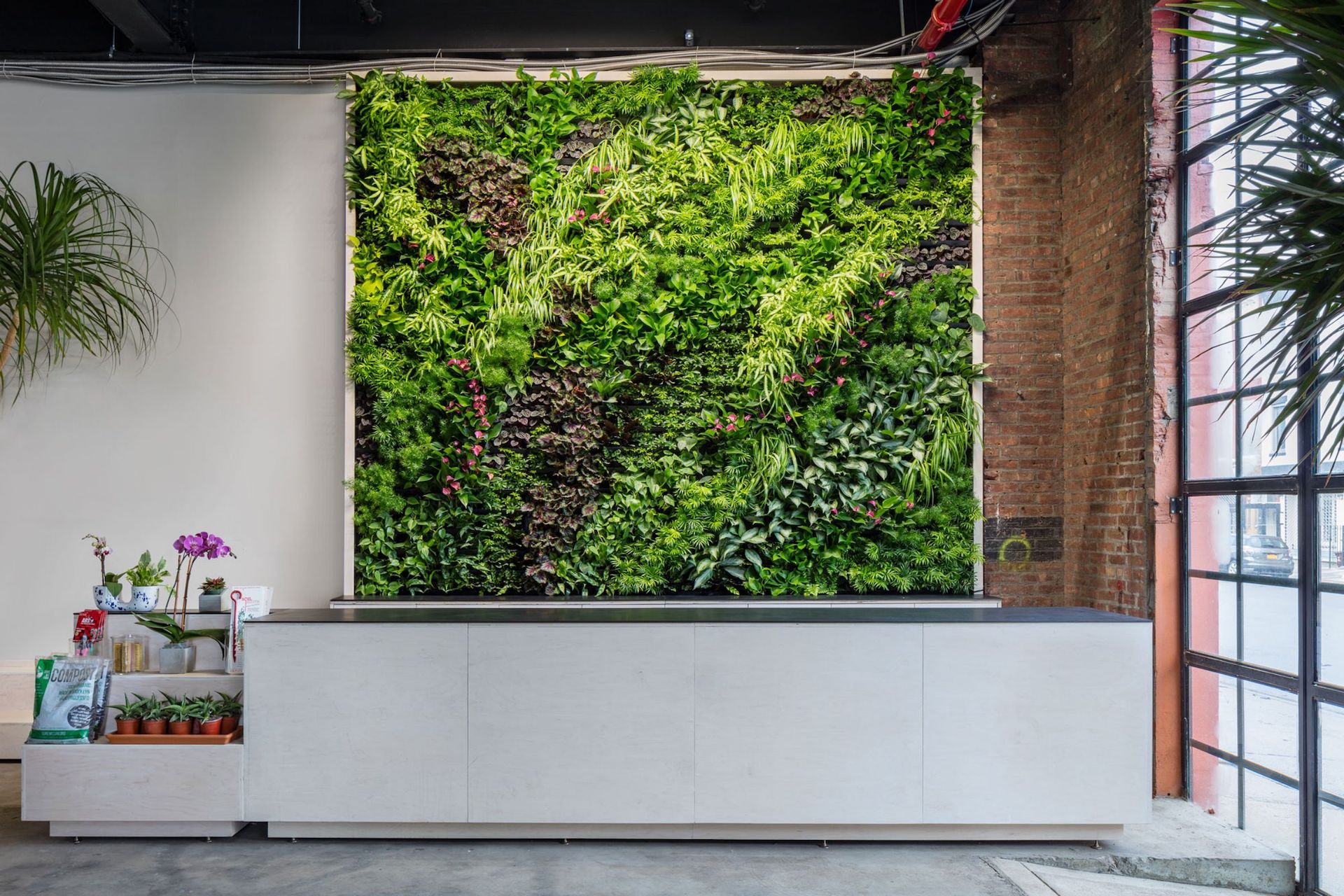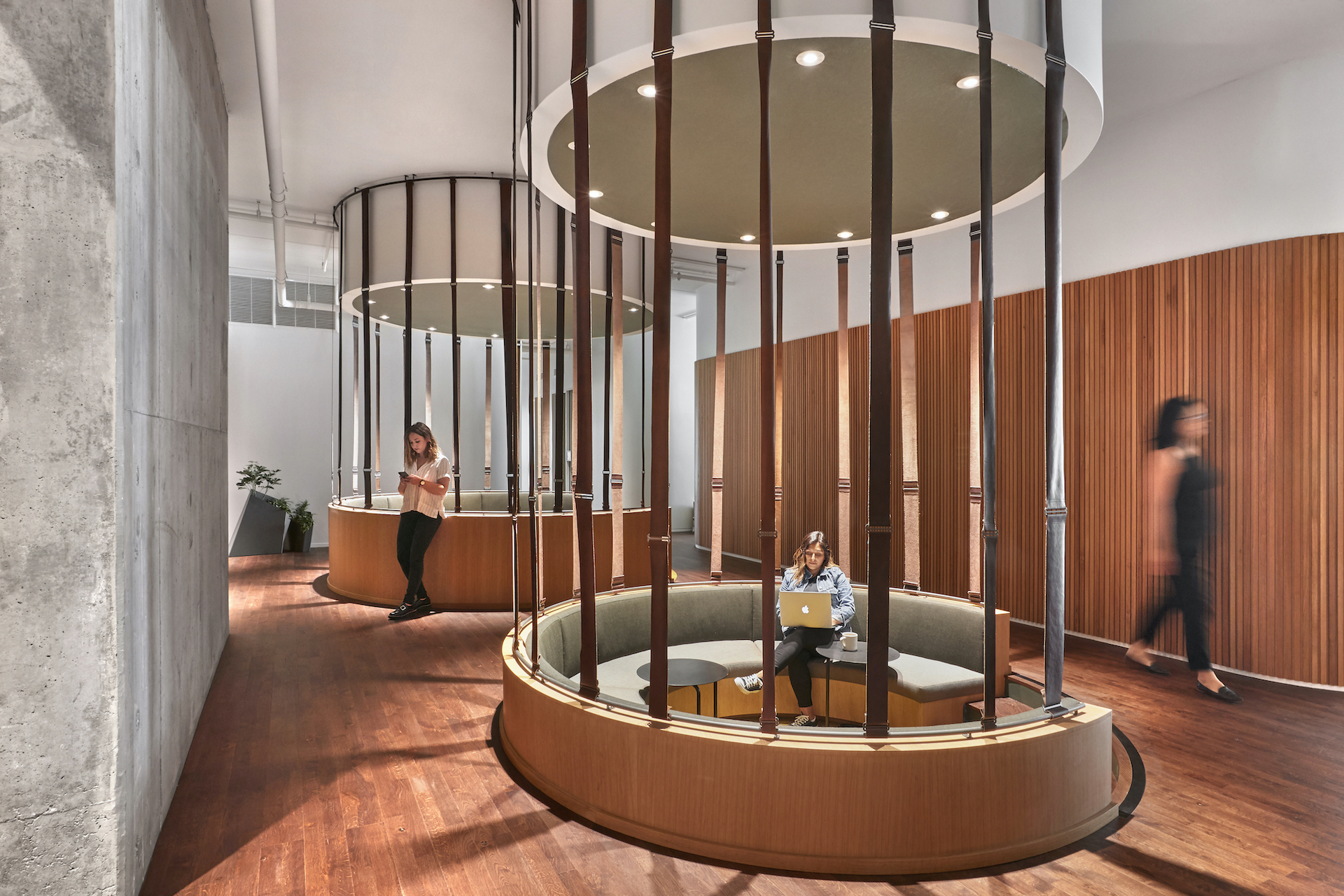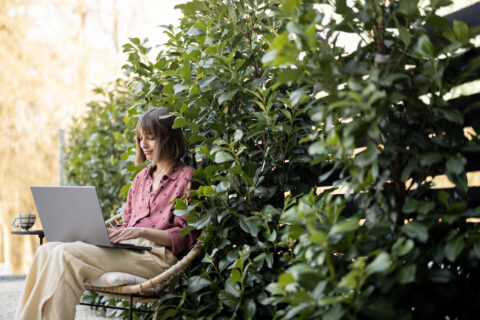We spend one-third of our lives at work. During this time, we often need to be creative, social, and productive – all at the same time. But did you know that office design impacts your workday in terms of how you feel?
I’m sure you’ve unconsciously spent time staring out of an office window or considered how fresh paint could add more personality to bland office walls. These considerations are a common outward display of our psychological need for a pleasant physical environment.
In fact, “we can apply environmental psychology to design and architecture…, including lighting, space planning, ergonomics, acoustics, branding, interior design, proportions, color scheme, and use of empty space.”
When we look for ways to boost productivity at work, we often look for tools to work more efficiently, automation technologies to save time, concentration strategies to finish work faster, etc. In that quest, it’s easy to overlook how office space design impacts those aims along with your health and well-being. A quality and thoughtful office design leads to a less stressful and more productive atmosphere.
Here are five simple ways an office re-design can positively change your space.
1. Get comfortable
Nothing can affect productivity more than discomfort. If your back hurts or you’re distracted by a headache, work is the last thing on your mind. A quality office chair, a clean desk, and a well-lit office are important environmental considerations for improved productivity, comfort, and health.
Ideally, your office should be a pleasing environment with comfortable fixtures and furniture. For example, adjust your chair or computer screen so you can look straight ahead to avoid neck and back issues.
Meanwhile, sitting for hours can be dangerous to your health, consider taking mindful movement breaks or installing a few standing desks so you and your team can spend less time sitting and more time standing. Adjustable standing desks are proven to improve job performance and psychological health.
2. Incorporate greenery
Nothing is better than some greenery and mood-refreshing plants. If your office is blank and empty, it’s a good idea to bring the beauty of nature indoors to create a more comfortable, attractive, and productive space to work. From office plants to lush green walls, you and your employees are happier, healthier, and more productive in the presence of plant life.

Greenery installations can be designed for your waiting area, meeting rooms, offices, breakroom kitchen cabinets, and more. Even adding a small potted plant to your desk can help lower stress as you cope with the daily demands of the workday.
Not to mention: Oxygen-generating plants recycle old, stale air. So, add a breath of fresh air to your workspace and go green.
3. Eliminate the noise
Noise is one of the most common office complaints, especially in open offices. “In offices, irritating noise can come from all kinds of sources: air conditioning, obnoxious ringtones, traffic, nearby construction —especially—from other people’s voices.”
One study, for example, links noise exposure to cognitive performance and found that mental workload and visual/auditory attention are significantly reduced when participants were exposed to noise at higher decibel levels (95 dBA level).
A growing body of research continues to suggest that high decibel noise can lower productivity, induce stress, lower morale, decrease job satisfaction, and more. Consider how noise impacts your office space. “In some open-plan offices, noise ranges from 60 to 65 decibels. That may seem minor compared to a busy highway that generates 85 decibels or a refrigerator that hums along at 40, but it can make cognitively demanding work difficult,” according to Steelcase.
The solution “is a variety of workplace environments, each designed with consciousness of sound for the task and the people using the spaces. Work environments need to be designed not just for appearance, but also for experience in all the senses, especially hearing.” If you need a simple solution, consider an office sound masking system and make noise-canceling headphones widely available for your team.
4. Pay attention to color, lighting, and shape
Various colors affect our performance in different ways. Blue and green can help us be more creative, while red helps us to pay more attention to details, etc. Lighting is the next important factor. Dimmer lights make us feel freedom and thus creativity, while bright lighting can induce evaluative and analytical thinking.
Meanwhile, incorporating a circular-style seating area can create an inviting space that promotes teamwork and collaboration.

5. Personalize your office space
Personalize your office with art, decorative cup holders, plants, or even a unique lamp. Taking ownership of your workspace can provide mental health benefits too, by helping your team maintain a sense of control over their own space. “Bringing in personal items such as photos, knick-knacks, and children’s drawings may provide workers with a greater sense of ownership and control over their space, which could help to buffer against the negative effects of a lack of privacy.”
Researchers suggest that “creating a place of one’s own in an otherwise public workspace environment should further contribute to individuals’ positive cognitive and affective states, resulting in enhanced mental resources, enabling better coping with the potentially debilitating interferences associated with low privacy.”
As an employer, give your employees some freedom to personalize the design of their workspace. One study confirms that “workers given the opportunity to arrange a small office with as many or few plants and pictures as they wanted were up to 32 percent more productive than others not given this control.”
Productivity and workplace wellness doesn’t just have to come from sheer will. Encourage and inspire your team through your surroundings. To maximize employee productivity, organize and decorate your office space in a way that makes them feel excited and encourages them to give their best at work.
Louise Harris is a co-founder of Christian Marketing Experts and a marketing specialist working with various brands online. She is devoted to helping small businesses bridge success gaps by providing in-depth, actionable advice on digital marketing, SEO, and small business growth. Follow her on Twitter @lastredit.
© YFS Magazine. All Rights Reserved. Copying prohibited. All material is protected by U.S. and international copyright laws. Unauthorized reproduction or distribution of this material is prohibited. Sharing of this material under Attribution-NonCommercial-NoDerivatives 4.0 International terms, listed here, is permitted.














